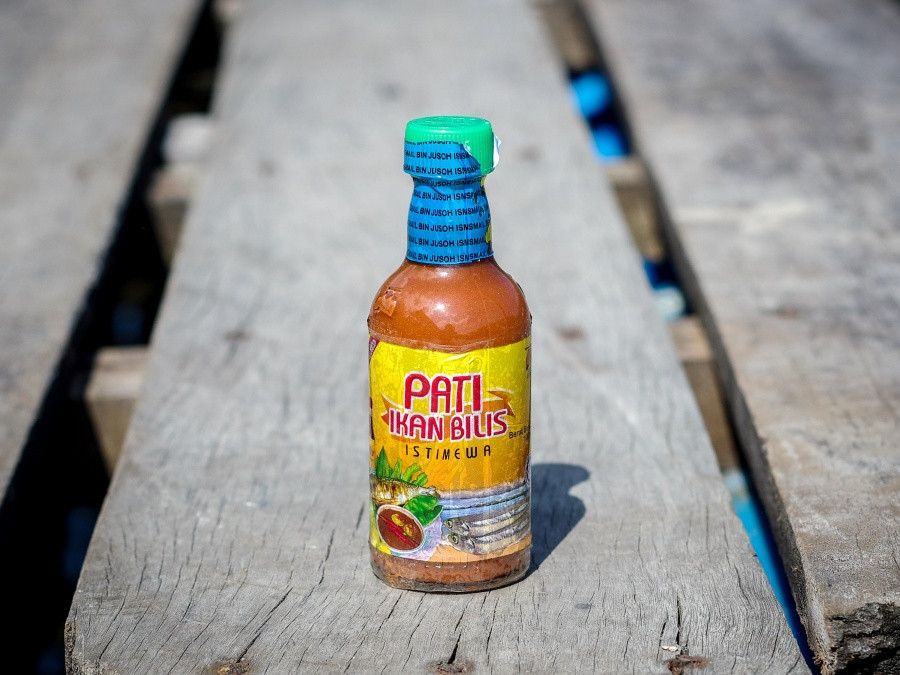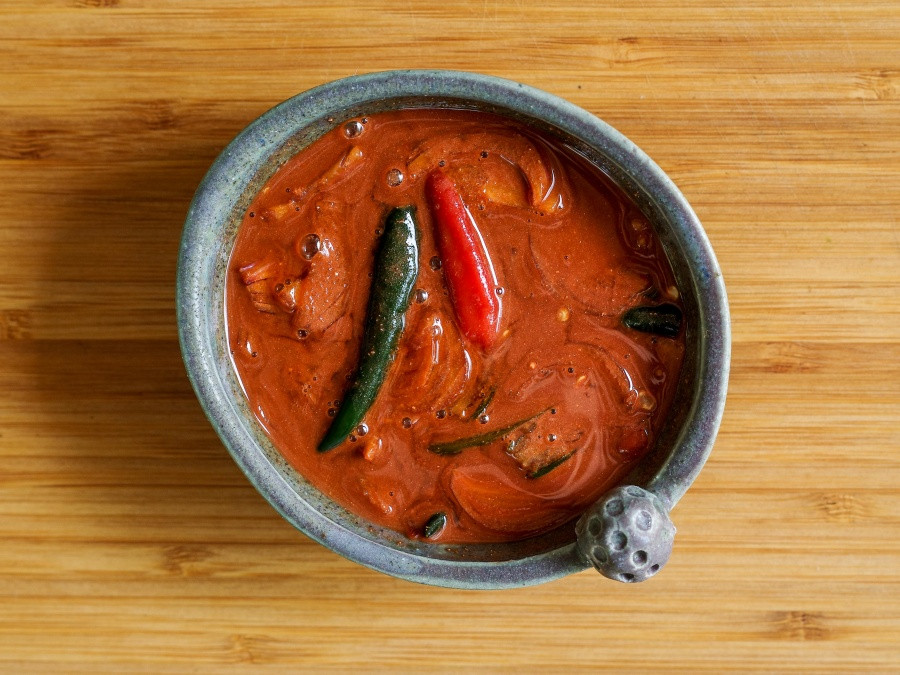The making of budu, our underrated condiment
by Shah Shaha12 Mar 2021
The fermented anchovy brew is salty, pungent, and entirely deserving of a spot in the umami hall of fame.
Just like many Malaysian foods, budu draws a bold line between its lovers and haters. It’s a staple among people living on the east coast of peninsular Malaysia and the pride and joy of Kelantan, its place of origin.
Budu tends to be confused with fish sauce. Wikipedia lumps it in with Indonesia’s ketjap-ikan (literally meaning fish sauce), Japan’s ishiru and Korea’s aekjot. After researching how each of these is used, I can safely say that budu does not belong in the same category. Ketjap-ikan, ishiru and aekjot are used for cooking, but budu is neither a sauce nor a seasoning. It’s a condiment. You don’t use budu in the kitchen, but at the dining table.
I was a teenager when I first tried it. Growing up in Pahang and having no relatives from Kelantan, it was rare for me to see it served at our house. One day, my father brought home a glass bottle filled with a grey-brown liquid mush, excited to show me what its unappetising contents were. He chopped up some shallots and cili padi and poured this liquid over them, squeezing half a lime over it all.
“This is budu,” smiled my father. He took a piece of the grilled mackerel we were having for dinner, dipped it in the budu concoction and ate the lot with rice and ulam. I did the same.
It was delicious. Its saltiness was cut by the sharpness of the lime and chilies, and its savouriness enhanced the flavour of the grilled mackerel. Budu has a strong, distinctive fishy taste when sampled on its own, but when eaten with rice, that flavour becomes mellow and rounded. It’s a classic flavour enhancer, a complement to mild dishes like singgang.
How is it made?
Simply put, budu is made from fresh anchovies that have been left to ferment in salt for about a year. According to Muhammad Izwan, owner of Budu Cap Ketereh, the longer the fermentation process, the more flavourful it is.
Budu was created out of necessity. Izwan says that his father was a fisherman in the ’70s and he noticed that with each haul after a long voyage, there were lots of anchovies being caught together with bigger fish. During the monsoon season when it was difficult for fishermen to head out to sea, they needed a way to preserve their catch throughout the season due to limited food supply. Izwan’s father didn’t want the anchovies to rot, so he preserved them in salt and budu was created. As it gained popularity, he eventually opened a factory.
The first step to making budu at Izwan’s factory is to mix fresh anchovies with salt in a 70:30 ratio. The mixture is kept in tanks and left to ferment for up to a year. During this period, the anchovies will liquify through the fermentation process, no blending required. After the fermentation period, the mixture is cooked for three hours and left to cool for three days. On the fourth day, sugar and pepper are added to balance the saltiness.
Nowadays it’s less common to find people making budu at home because the process is time-consuming, but if you do want to make your own budu at home, the method is the same. Just make sure you use fresh anchovies and be patient. Remember: the longer the fermentation process, the more flavourful your budu will be.
Budu in other forms
“You cannot call fermented anchovies anything else other than budu. It must be anchovies and nothing else. Budu means fermented anchovies,” said Izwan on whether the condiment could be made using a different fish. Budu is a sub-category of salted fish; meanwhile, if you were to preserve freshwater fish in salt and toasted rice, the process (and resulting dish) would be pekasam.
One would think that budu is a unique condiment only available on the east coast of peninsular Malaysia, but that’s not true. In my quest to delve into its history, I discovered that there were others like it around Malaysia, but by different names. In Sarawak, there’s a sauce similar to budu called rusit, which is eaten in the Riau Islands as well. In parts of Indonesia, specifically the Bangka Belitung Islands, the condiment goes by rusip. In the Pangasinan province of the Philippines, there’s a factory that makes budu, or in Tagalog, bagoong. It’s even served similarly with chillies and a squeeze of lime.
Variations of fermented anchovies go as far back as ancient Roman civilisation where a recipe called garum was developed using anchovies preserved in salt and thyme. In the present day, Europeans enjoy fermented anchovies bottled as the famous Lea & Perrins Worcestershire sauce. Some may argue that Worcestershire sauce was inspired by the Asian fish sauce, but it’s very difficult to prove this when garum was available in Europe a long time before that.
Kelantan’s budu might not span civilisations but it’s a condiment so prominent and influential that even dikir barat songs have been written about it. It’s about time it reaches the masses in other states to take its place in Malaysia’s hall of fame.
***
Shah Shaha is a Pahang-born writer and thespian with a keen interest in east coast Malay food.
Read next
How did tinned sardines become a staple in Malaysian kitchens?
A history of canned fish in Malaysia

Bosou sada
Fermented fish in all its pungency

The science and joys of making pekasam
An earthy and earthly delight






